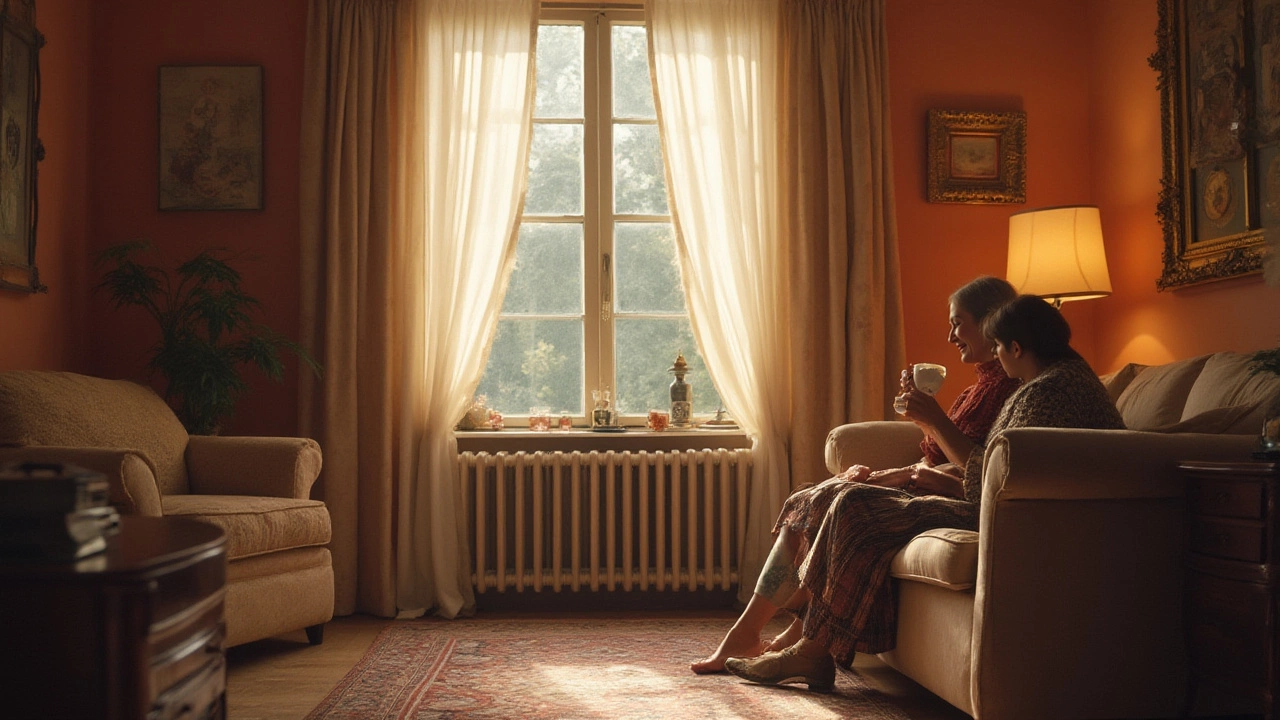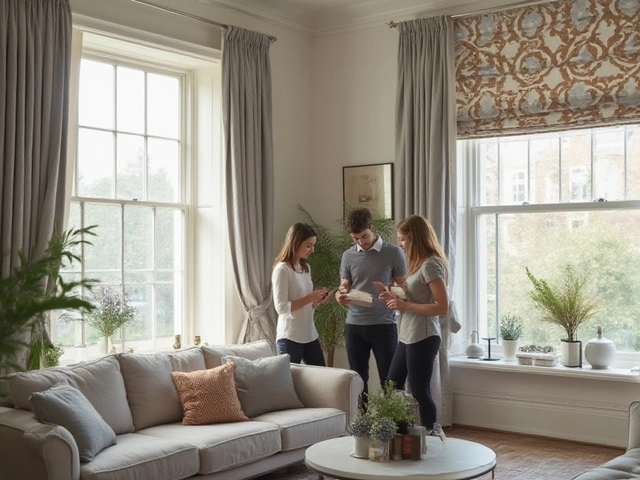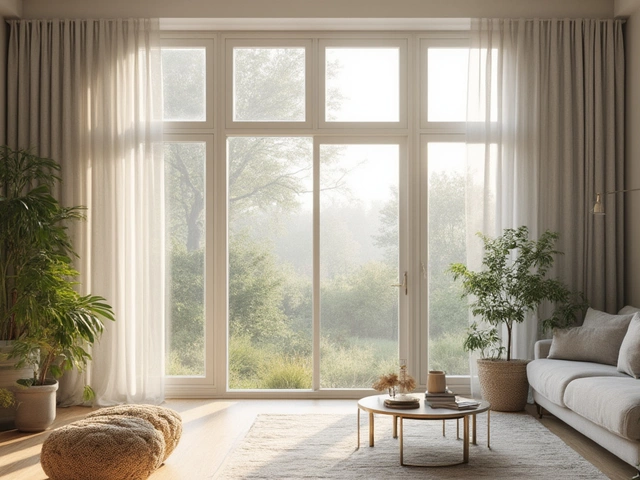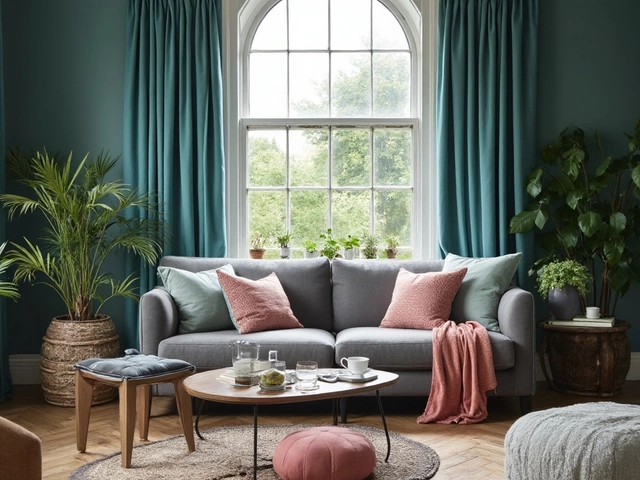You wouldn’t believe how many houses waste heat just because of curtain placement. We deck out our windows for style or privacy and barely think about how it could mess with our heating. But how you hang your curtains can actually change the way your room feels and your energy bill looks. What if drapes could actually mess up not just interior decor, but the entire way your home’s hot water baseboards work? Handy, right? Or maybe not, if you’ve ever wondered why your toes freeze by the window, even with the heat cranked up.
How Hot Water Baseboards Actually Heat Your Home
Ever peek inside those long, low covers along the wall and think, "How does this tiny thing keep my whole bedroom warm?" Well, hot water baseboards don’t just pump out heat like a space heater; they’re all about convection. Here’s the short and sweet: your boiler heats up water, sends it down pipes through the baseboards, and the baseboards warm up. Air near the floor, which is cold, gets heated as it passes over the fins of the baseboard. This air rises, and cooler air drifts down to repeat the process. Before you know it, the whole space evens out to that toasty temperature you set on the thermostat.
This is pretty different from a forced air furnace, which just blows hot air across the room. Instead, baseboard heaters operate steadily, giving you a gentle, consistent warmth without noisy blasts. And if you're curious about efficiency, hot water baseboards are often touted as 85-95% efficient depending on your system. All that to say: these heaters are meant to quietly and steadily keep you comfortable, but they need airflow to do their job right. Block this airflow, and your heater might as well be sitting outside in the snow for all the good it’s doing you.
| Heater Type | Heating Method | Average Efficiency (%) |
|---|---|---|
| Hot Water Baseboard | Radiant/Convection | 85-95 |
| Forced Air Furnace | Blown Air | 80-95 |
| Electric Baseboard | Radiant | 99 (at source) |
So, hope you see why airflow is more than just a technical detail. Next time you notice your room feels chilly even though the heat is on, peek at what’s in front of your baseboards—because it might just be your stylish curtains.
Why People Let Curtains Cover Their Baseboards (It’s Not Just for Looks)
The temptation’s real. Floors get chilly, windows feel drafty, and sometimes the only thing standing between you and that nosy neighbor is a pair of thick blackout curtains. Here’s where most folks slip up: they get those gorgeous, floor-length drapes, and suddenly the baseboard gets buried behind a wall of fabric every night.
For lots of us, this isn’t about neglect—it’s a trade-off. Maybe you’re battling that draft from 1980s single-pane windows. Or maybe your toddler grabs at everything except curtains, so you let them fall lower to keep the living room looking plush, neat, or cozy. Some people figure, "If I keep the warm air from going up to the window, maybe my room will stay warm." Intuitively, it sounds clever—keep the heat inside, keep the cold out. But what’s really happening is you’re trapping heat behind fabric, letting only a trickle into the room.
Here’s something wild: the U.S. Department of Energy once pointed out that poorly placed window treatments can actually increase home heating costs by up to 20%. Imagine tossing that much money out the window because you wanted longer drapes. Even in modern homes, it’s common to see baseboard sections hidden behind sheers or thick velvet curtains “for the look.” Builders hardly ever warn about the impact on heating when you pick those out.
And it’s not just about heat. There’s also safety. If you have synthetic drapes hanging near those baseboards, and there’s any risk of a thermostat going wonky, excess heat could singe or melt parts of the fabric. Plenty of firefighters have found the source of house fires in hidden spots where fabric met heat. Luckily, most hot water baseboards don’t get scorching enough to start a fire easily, but you don’t want to roll the dice.
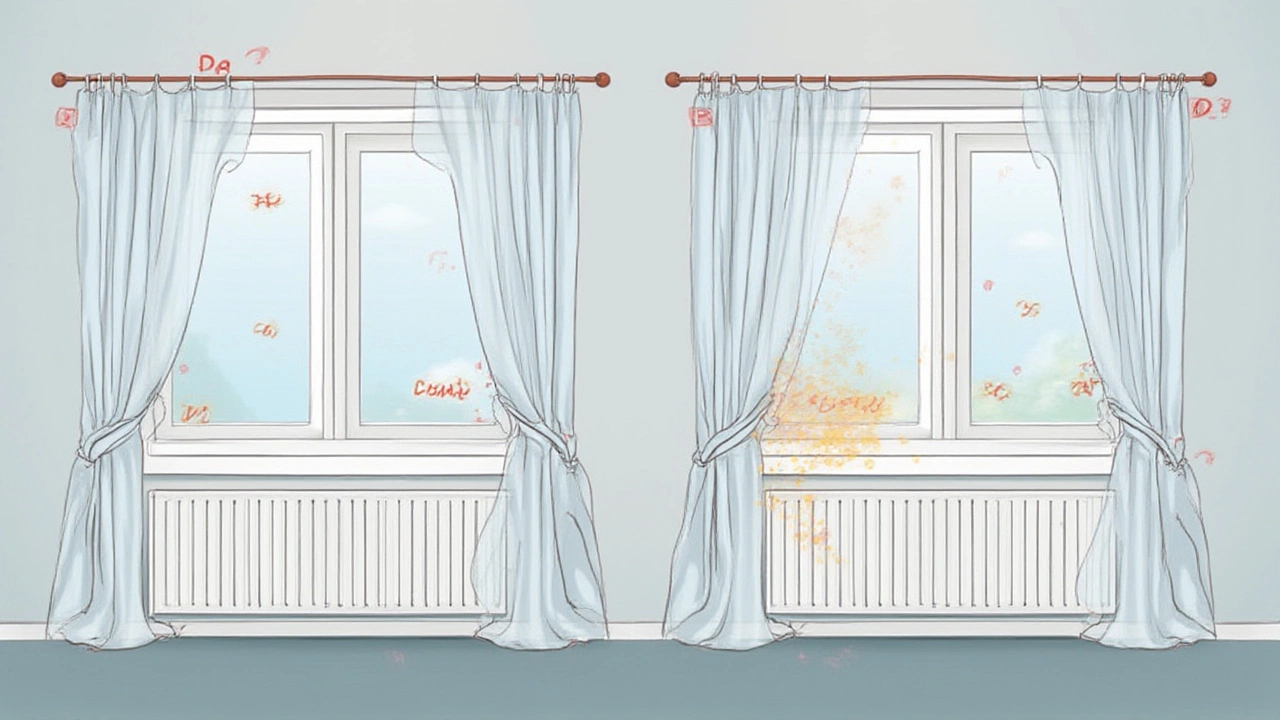
How Covering Baseboards with Curtains Affects Your Room’s Heat
If you picture hot water moving through those pipes, what it really needs is space to "breathe." When you seal that off with a heavy curtain, two main things happen: first, the heat gets trapped between the wall and the fabric, never fully escaping into the room. Second, you lose out on convection, which is the baseboard’s superpower. The air can’t circulate, so your heater’s working extra for little gain.
Ever stand beside a window on a winter night and feel a cold draft despite the heater running? That’s usually curtain placement. Instead of letting baseboards cycle warm air upward, you’ve got a fabric barrier holding it in, sometimes even channeling it straight up between the wall and curtain. This creates hot and cold zones—right next to the baseboard is toasty, but the rest of the room, especially by the couch or bed, stays chilly.
If you love numbers, here's a tip: a study in Canada found rooms with baseboards partially or fully blocked by curtains were on average 3-5°F cooler (that’s about 1.5-2.5°C) than comparable rooms with open baseboards. That might not sound like a lot until you consider you’re paying more for less comfort—and likely bumping your thermostat up to compensate.
Besides wasted dollars, there are other drawbacks. Trapped heat can dry out your curtains, fade dyes, or stiffen fabric over the years. In rare cases, metal from the heater can even leave rust marks on material left touching for months (another fun surprise at spring cleaning time). And don’t get me started on dust—the more fabric sitting in that zone, the more dust collects, which can make allergies worse. It's not unusual for allergists to point to curtains as one of the biggest dust magnets in American bedrooms, right behind carpets and pet bedding.
The Smart Way: Best Curtain & Baseboard Pairings That Don’t Hurt Heating
If you’re not ready to trade beauty for warmth—or vice versa—don’t worry, you’ve got options. You can absolutely have both style and comfort; it just takes a little planning. For starters, always check where your baseboard heaters run before hanging new drapes. If you’re set on floor-length curtains, install them so they hover an inch or two above the top of the baseboard cover. This keeps the airflow clear and avoids fire risks. Don’t love the floating look? Try curtain holdbacks during winter months—just sweep the fabric back during the heating season to open up space.
Another smart move: consider layered window treatments. Pair roman shades, cellular (honeycomb) blinds, or roller shades with shorter, decorative side panels. Keep the functional layer raised or open during the day and at night when the heater’s working hardest. Some energy nerds love using magnetic or Velcro-attached insulated panels on just the windowpane, so you can keep your heat and privacy without sacrificing the whole aesthetic.
- curtains that end at window sill height, leaving the baseboard fully exposed, usually win for heating efficiency and clean looks.
- Sheer curtains work if you double up with blinds or use them primarily for summer months when the heater’s off.
- If your room needs blackout, opt for distinct layers: blackout roller shades plus decorative sides that stop before the baseboard.
- Magnetic curtain tie-backs or easy-grip holdbacks keep long fabric off the heater, especially if you have pets or kids who always mess up neat folds.
- For renters, quick fixes like using binder clips or simple Velcro tabs can temporarily keep curtains tied up higher without wall damage.
If you’ve got sharp-angled or wide bay windows, adjust your rods and curtains to split the difference—hang them to the sides, and keep the baseboard area unblocked as much as possible without sacrificing coverage. Remember, the air rising from the baseboard needs a clear shot upward into the room!

Expert Tips & Easy Fixes If You Can’t Rearrange Everything
Some situations just aren’t easy to fix. Maybe your windows are oversized, or it’s an old house with radiators under every window. No need to rip your home apart—or freeze all winter. Here’s what works if you’re stuck:
- Raise the curtain rod: Even an inch higher can give your heater more breathing room, and most folks won’t notice visually.
- Hinge or magnetic baseboard covers: If your covers have a lip that reaches out, swap for flat covers or DIY a “bump-out” with a trim piece to keep heat moving.
- Rotate curtains seasonally: Go with short or tied-back options in winter, longer ones in summer. Bonus: extends fabric life and lets you change up decor more often.
- Run ceiling or oscillating fans (on reverse) to keep warm air circulated without cold drafts.
- Table placement matters: If you must put a desk or dresser in front of a baseboard, keep a gap of at least 3 inches, and avoid pushing storage bins right up against the heat.
If you've ever tried those stick-on window insulation kits—yes, the ones that crunch up and tear by spring—you know the limits of hardware-store quick fixes. But paired with smart curtain placement, they actually work well at keeping things cozy. You don’t have to spend a fortune either. Instead of fancy custom drapes, just hem what you already have, grab a couple of tie-backs, or try DIY split curtains you can move as needed. It's about being flexible and understanding that comfort, safety, and style can exist together—they just need a little nudging in the right direction.
Honestly, once you tweak your curtain setup, the difference tends to be immediate. Less hot-and-cold fighting between rooms, lower heating bills, and no more stepping onto an ice-cold floor in the morning. Pretty nice payoff for a simple change that costs little or nothing—and you’ll probably wind up loving how it looks, too.
